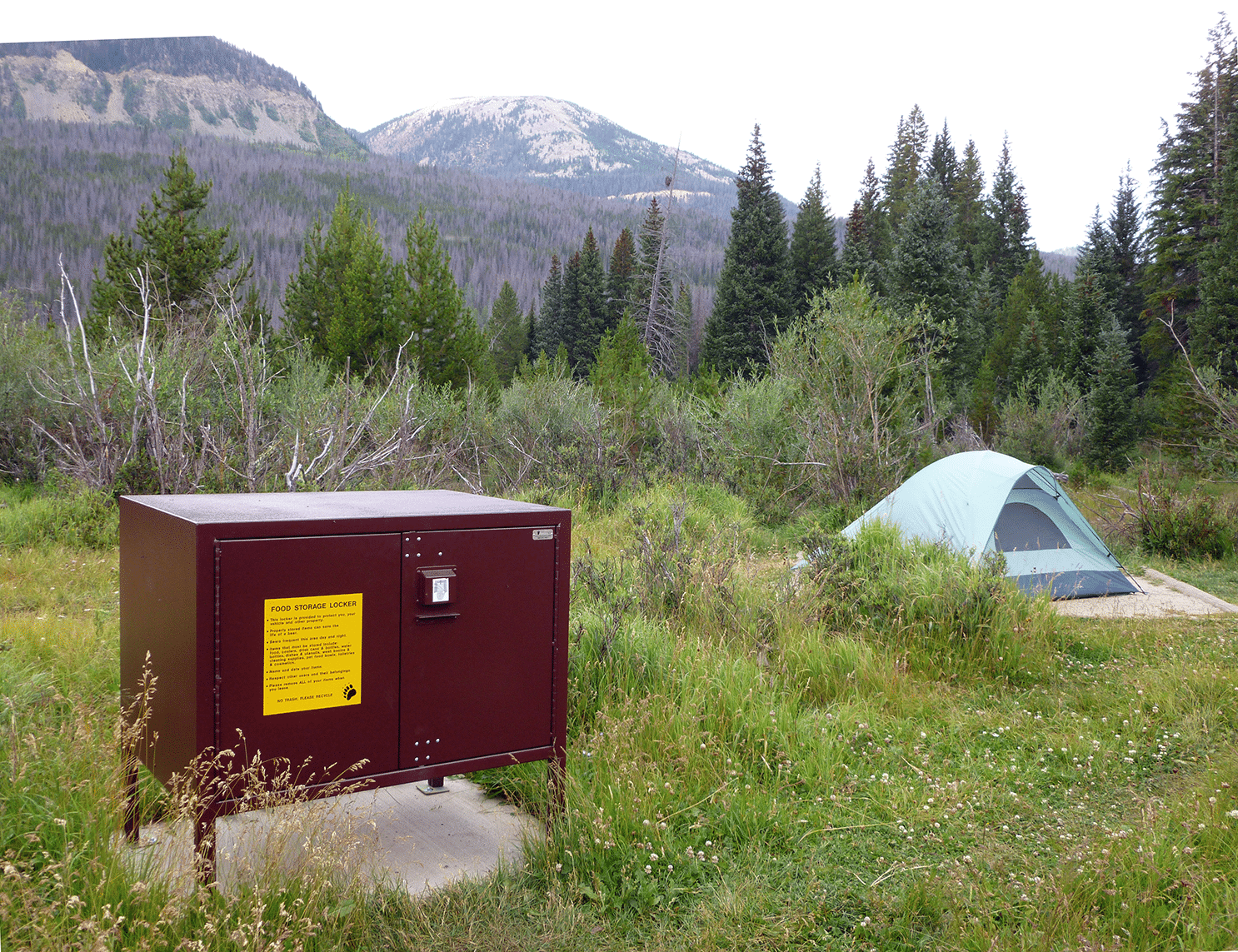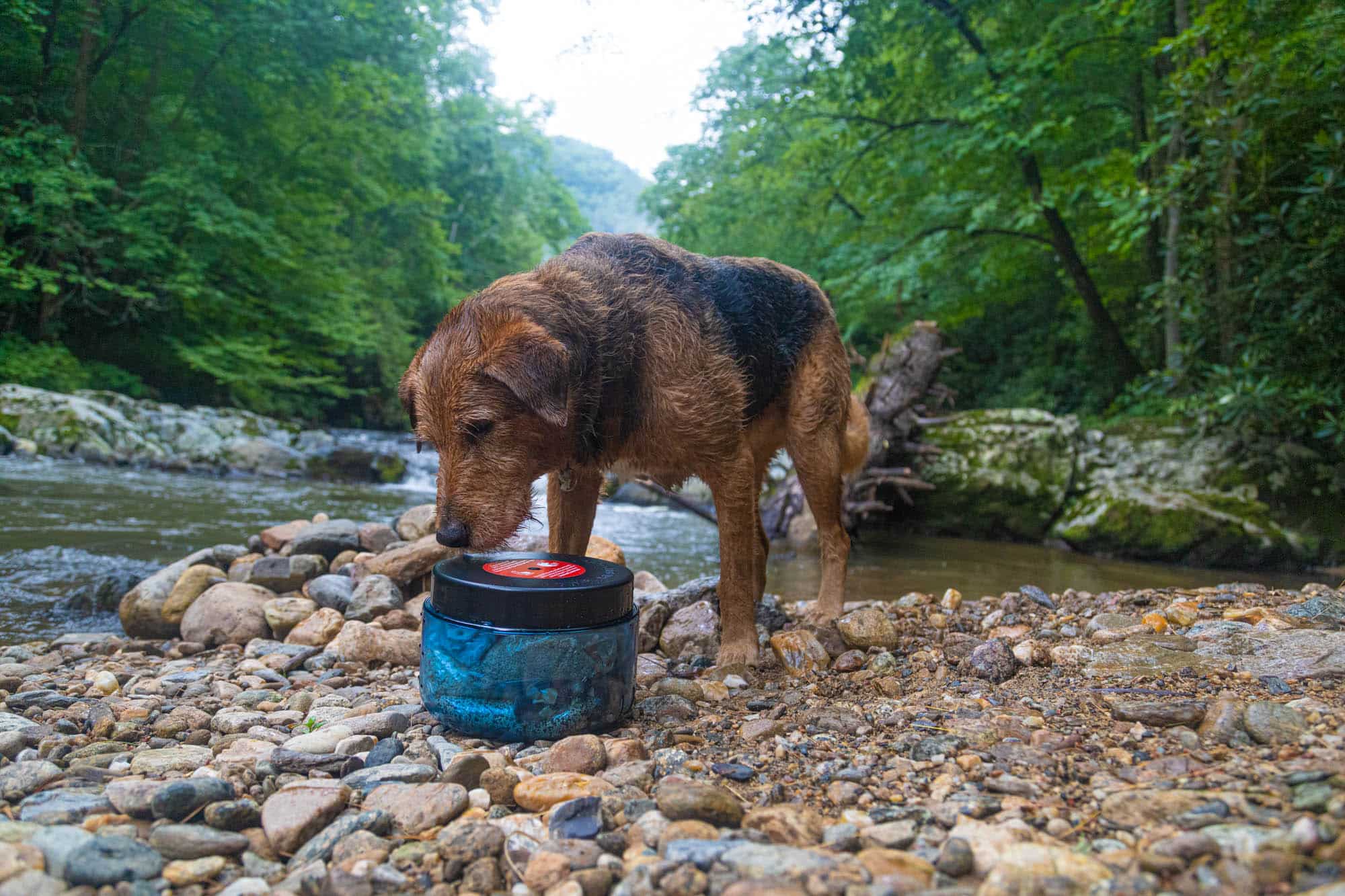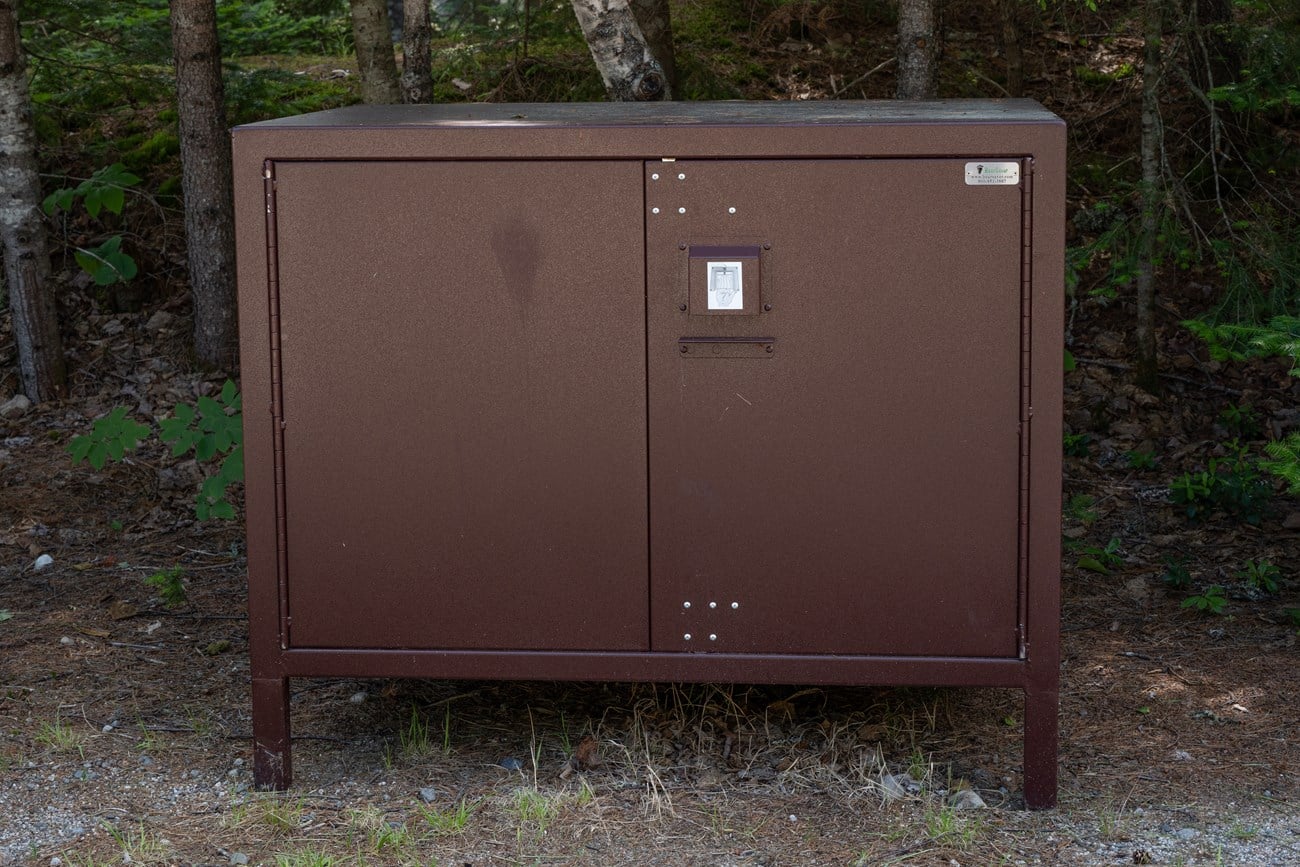
Bear Boxes for Camping
- Jessica Cockroft

Mastering Bear Box Camping: Your Guide to Secure Food Storage
Some people use the term ‘bear box’ as a catch-all for storage dedicated to keeping out bears. Technically, though, bear boxes are for food storage when camping in bear country.
And it gets even more specific than that. There are a lot of food storage products on the market that cater to camping in bear country. First, we’ll get an overview of what a literal bear box is. Then we’ll look at other food storage options before circling around to learn more about using boxes.
What is a Bear Box?
A bear box is a large metal container that stores several coolers worth of food. They’re bolted down to concrete footers and feature unique handles that require the capabilities of human fingers to operate.
That may not have been what you wanted when you typed it into your search bar! We’ll take a minute to look at the other bear-proof food storage options, but if you want more on actual boxes, scroll down to get some common questions answered.

A Bear Box installed in Kings Canyon National Park.
Other Bear-Proof Food Storage Options
If you’re headed to backcountry sites or plan on thru-hiking one of America’s longest trails, you won’t be able to depend on bear boxes. Keeping your stash safe will depend on you choosing a personal-sized option to take with you.
Bear Canisters
The canister version of a bear-proof box is small enough to fit in a hiking pack. But are they really bear-proof?
It wouldn’t be right to call them bear-proof if they wouldn’t keep bears from enjoying your food. The Interagency Grizzly Bear Committee tests products that claim to be bear-proof. You can find a video of another test, courtesy of Folsom City Zoo, demonstrating the abuse they can take!

At BearVault, we offer 4 different sizes to fit your needs, but even the largest can be used by thru-hikers with full-size packs! They’re clear-sided to allow easy selection from your stash, and the wide design lets them double as a camp stool.
Other options on the market feature heavy and inefficient designs, can’t be seen through, and/or sacrifice capacity to achieve bear-proof status.
Bear Proof Coolers
Many brands now offer coolers that claim to be too tricky for bears. The list, available from the IGBC, is extensive. It’s worth noting that every cooler on it requires bolts or padlocks to make it bear-proof.
That’s not a big issue for overnight storage, but it might be annoying for frequent access as you hang around camp. You’ll have to be vigilant and lock it down before wandering off for an impromptu hike.
Also, if your campsite has a bear box installed, you’ll likely be asked to use it, regardless of the type of cooler you have. Be sure to check your site’s requirements.
Bear Bag
Before we had the technology to design hard-sided canisters for food safety in bear country, the bear hang was popular. Food, in a stuff sack, would hang from a tree limb like a pinata. Not tempting at all!
Most bear bags don’t claim to be capable of warding off claws and teeth. Your ability to make it inaccessible is what your stash depends on! And bears have gotten quite good at figuring out how to access bear hangs.

Bear bags are not as secure as hard sided canisters.
One brand has received IGBC certification, so it’s available if you want a soft-sided option for protecting your stash. However, many locations now require a canister style to eliminate the use of bags that can’t keep bears out. Check out this list to ensure you’re compliant when hitting the trail or making camp.
Frequently Asked Questions About Bear Boxes
But hey, you were looking for info on those full-size bear boxes (also called lockers). Which campsites have them? If they’re there, are you required to use them? How much will they hold? OR… what do you do if your destination doesn’t have one?
You’re still in the right place! Let’s look at each of those questions and get some answers.

Bear boxes near Mt. Katahdin in Maine.
What Campsites Have Bear Boxes?
When you’ve decided where to camp, do a quick search to see what’s available.
Let’s say you’re planning to visit Rocky Mountain National Park. You may think that, since it’s not grizzly country, it won’t have bear-proof storage options. But typing “Rocky Mountain National Park bear box” in the search bar will tell you they do! The first link, at least for me, takes me straight to a page confirming that all park campgrounds have community lockers. There’s also a list of trailheads that have lockers for hiker use.
A little research goes a long way in making sure you’re covered.
Do You Have to Use Bear Boxes?
In a word… yes.
If they’re present, there’s an expectation that they’ll be used. HOWEVER, especially during peak season, it’s not uncommon for community lockers to fill up. Campgrounds suggest storing food in your car if that’s the case.
We recommend bringing a BearVault, just in case. Keeping the attractive scents out of your car could save you the cost of buffing out scratches or replacing broken windows and doors.
How Much Do Bear Boxes Hold?
Bear boxes come in a range of sizes. The best way to be prepared is to research your destination specifically. Some sites will have information readily available, like Sequoia & Kings Canyon. If you’re headed to a smaller, non-government campsite, you may have to call ahead to make sure your cooler fits.

Bear boxes in Big Bend National Park.
And regardless of your choice in bear defense tools, use your head and do your own research. It’s imperative not only to your safety, but to the safety of our wild places and future generations!
What Do You Do if There’s No Bear Box?
Let’s say you show up and there’s no room in the campground locker. Or, you thought there was a locker, but it’s broken. What then?
Having a backup plan is a good idea. If you pack light in the food department, your stash may fit in your BearVault. Prioritize the smelliest items and store what’s left in the alternative.
What’s the alternative? Your car.
If you have to store your food in your car while camping in bear country, there are a couple of things to remember. First, always keep food as out of sight as possible. On the floor. Under stuff. Have shades in the windows. Bears can smell way better than us, but they also learn to recognize the SIGHT of human food items. And they weigh effort against potential payout, so don’t tempt them by displaying your food prominently on the dashboard!
It should go without saying, but locking doors and keeping windows closed is imperative. Bears have been known to open car doors, so don’t assume yours require opposable thumbs.
Why is it Important to Use Bear Boxes?
Using bear boxes is just as beneficial for bears as it is for you.
When a bear gets into human food, it sets off a string of events. It doesn’t matter if it’s household garbage sitting at the curb or a backpacker’s poorly stored stash. Turning to us for food is a behavior that holds grave consequences for bears and humans alike.
Bears are primarily scavengers. With a steady need to consume a lot of calories, either to recover from seasonal hibernation or to prepare for it, food is never far from mind. Give a bear a source of easy food, and they’ll be back for more.

It’s natural for animals to return to reliable sources to fulfill their needs. Everyone entering or living in bear country needs to take steps to keep bears from equating proximity to humans with proximity to an easy meal.
If they do score and change their behavior accordingly, they’re considered ‘food habituated.’ At that point, protecting humans takes priority, and the bear is usually euthanized.
Why wouldn’t they be relocated?
Some instances give bears a chance with relocation. Conflicts aren’t always based on habituation, after all. These are usually the ones that get a second chance.
But in the case of habituation, the behavior usually isn’t bound by location. Transferring a problem bear from one trailhead to a backcountry location may only delay future problems, not prevent them. And unfortunately, female food-habituated bears have the potential to pass down their habits to offspring.
Protect Bears By Protecting Your Food
As the saying goes… “A fed bear is a dead bear.”
Saving tomorrow morning’s meal is just a tiny part of why you should take advantage of bear boxes when they’re there. Protecting your food can save generations of bears and the campers and hikers that come after you.
Author Profile

Jessica Cockroft
Jess merges her passion for words and an insatiable longing for adventure as an outdoor freelance content writer and marketer. When she’s not busy stringing words together you’ll probably find her planning another camping trip for her crew of kids or taking care of the homestead. You can find her on LinkedIn and Instagram, as well as on her own website.


